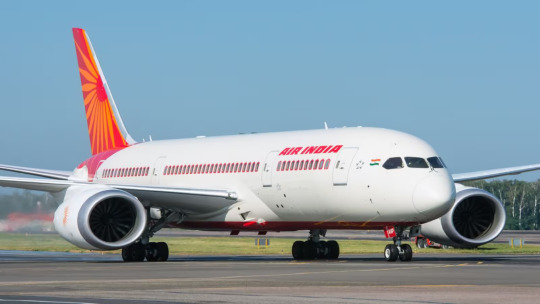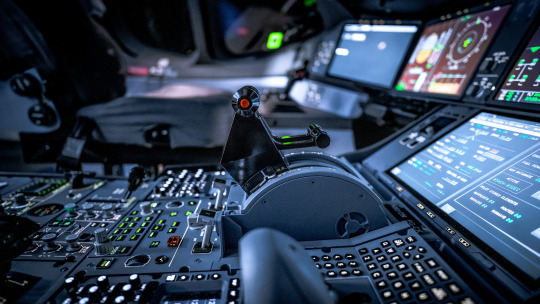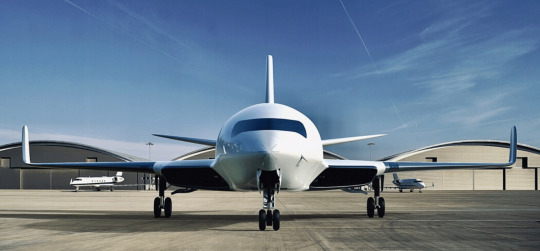Don't wanna be here? Send us removal request.
Text
Are There Any Medical Fitness Requirements For Aeronautical Engineering?

Aeronautical engineering is an exciting field that deals with the design, development, and maintenance of aircraft. Many students who aspire to become aeronautical engineers often wonder if there are any medical fitness requirements to enter this field. While aeronautical engineering does not have as strict medical standards as pilot training, there are still some health criteria that students should meet.
General Medical Requirements
Most universities and colleges offering aeronautical engineering programs do not have specific medical fitness criteria. However, candidates should be in generally good health to handle the physical and mental demands of the course. Some of the basic requirements include:
Good eyesight: While perfect vision is not mandatory, having good eyesight is helpful, especially for working with technical drawings, computer-aided design (CAD) software, and performing detailed inspections.
Normal hearing ability: Engineers may need to work in noisy environments, such as manufacturing plants or aircraft hangars. Good hearing ensures safety and effective communication.
Physical fitness: The course may involve practical work in laboratories, workshops, and even outdoor environments. A reasonable level of physical fitness helps in handling machinery and conducting fieldwork.
Mental fitness: Aeronautical engineering involves complex problem-solving and technical calculations. Students should be mentally alert and capable of handling stress effectively.
Medical Requirements for Certain Job Roles
While studying aeronautical engineering does not require strict medical tests, some job roles within the industry may have specific health requirements. These include:
Government or Defense Jobs: Organizations like ISRO, DRDO, and the Indian Air Force may have specific medical fitness criteria for aeronautical engineers working in specialized roles.
Manufacturing and Maintenance: Engineers working on-site in aircraft maintenance may need to meet certain physical fitness levels to perform inspections and repairs safely.
Aviation Authorities: If an aeronautical engineer wishes to pursue a career in aviation safety or airworthiness certification, some agencies may require basic medical assessments.
Special Considerations
Color Blindness: While color vision may not be a major issue for aeronautical engineers, certain jobs that involve electrical wiring, signal identification, or safety inspections might require normal color vision.
Chronic Illnesses: Students with chronic conditions such as diabetes, epilepsy, or heart diseases should check with their chosen universities and future employers regarding any possible restrictions.
Disabilities: Many engineering colleges provide support for students with disabilities. However, it is advisable to consult institutions about any specific accommodations available.
Conclusion
In general, aeronautical engineering does not have strict medical fitness requirements. However, good vision, hearing, and overall physical and mental fitness are beneficial for handling the challenges of this field. If you have any specific medical concerns, it is always best to check with your university or potential employers to understand their specific requirements.
Aeronautical engineering is an exciting and rewarding career path, and with the right skills and dedication, anyone meeting basic health conditions can excel in this field!
0 notes
Text
What Is The Typical Work Environment For An AME?

An Aircraft Maintenance Engineer (AME) plays a pivotal role in ensuring the safety and airworthiness of aircraft. The work environment of an AME is dynamic and multifaceted, encompassing various settings and conditions that demand both technical expertise and adaptability.
Primary Work Settings
AMEs typically operate in the following environments:
Hangars: These are large structures where aircraft are housed for maintenance and repairs. Within hangars, aircraft maintenance engineering perform routine inspections, troubleshoot issues, and carry out necessary repairs in a controlled environment. The indoor setting provides shelter from adverse weather conditions, allowing for detailed and prolonged maintenance tasks.
Repair Stations: Specialized facilities equipped with advanced tools and equipment where AMEs handle intricate repairs and overhauls. These stations may be located within airports or as standalone entities, focusing on specific components or systems of the aircraft.
Airfields and Outdoor Ramps: At times, maintenance tasks require AMEs to work directly on the tarmac or open areas of airports. This exposure means working in varying weather conditions, from extreme heat to cold, necessitating appropriate protective gear and adaptability.
Physical Demands and Conditions
The role of an AME is physically demanding and involves:
Exposure to Noise and Vibrations: Aircraft engines and machinery generate significant noise levels. AMEs often work in proximity to running engines, leading to exposure to high noise and vibrations. Utilizing protective equipment, such as earplugs or earmuffs, is essential to prevent hearing damage.
Handling Hazardous Materials: The job entails working with various chemicals, oils, and fuels. Proper handling and storage procedures are crucial to ensure safety and prevent contamination. AMEs must adhere to safety protocols and use protective clothing to minimize risks.
Working in Confined Spaces: Certain maintenance tasks require accessing tight or restricted areas within the aircraft. This necessitates flexibility and caution to perform repairs effectively without causing damage or injury.
Physical Labor: The role often involves heavy lifting, prolonged periods of standing, and maneuvering in awkward positions. AMEs must maintain physical fitness to meet these demands and ensure tasks are performed safely.
Safety Protocols and Protective Gear
Given the inherent risks associated with aircraft maintenance, AMEs are required to:
Wear Protective Gear: This includes gloves, safety glasses, helmets, and specialized clothing to protect against injuries and exposure to hazardous substances.
Adhere to Safety Regulations: Strict compliance with aviation safety standards and protocols is mandatory. Regular training sessions are conducted to keep AMEs updated on the latest safety procedures and technological advancements.
Work Hours and Schedules
The aviation industry operates around the clock, and so do maintenance activities. AMEs often work in shifts, including nights, weekends, and holidays, to ensure aircraft are ready for scheduled flights. Unexpected technical issues may require immediate attention, leading to extended work hours or on-call duties.
Conclusion
The work environment of an Aircraft Maintenance Engineer is both challenging and rewarding. It demands a high level of technical skill, physical endurance, and a steadfast commitment to safety. AMEs play an indispensable role in the aviation industry, ensuring that aircraft operate efficiently and safely, thereby upholding the trust of passengers and crew alike.
0 notes
Text
How Long Does It Take To Complete An AME Course?

The Aircraft Maintenance Engineering (AME) course is an essential program for individuals aspiring to work in aircraft maintenance and safety. This specialized training ensures that aircraft are maintained to the highest standards and operate safely. One common question among prospective students is: how long does it take to complete an AME course? Let’s break it down in detail.
Duration of the AME Course
The AME course generally takes 2 to 4 years to complete, depending on the specific program and the regulatory authority under which it is conducted. The course duration includes both theoretical and practical training, ensuring that students acquire the knowledge and hands-on skills needed for the job. Here is a detailed breakdown:
1. Theoretical Training
The first phase of the AME course usually involves 2 years of classroom-based theoretical training. This part of the course focuses on subjects such as:
Aircraft systems
Aerodynamics
Avionics
Maintenance practices
Civil aviation regulations
The theoretical training is designed to provide students with a strong foundation in the principles of aircraft maintenance and safety.
2. Practical Training
After completing the theoretical training, students are required to undergo 1 to 2 years of practical training. This training takes place at DGCA (Directorate General of Civil Aviation)-approved maintenance, repair, and overhaul (MRO) organizations or airlines. During this phase, students gain hands-on experience in:
Inspecting aircraft
Troubleshooting issues
Performing maintenance tasks
Ensuring compliance with safety standards
Practical training is crucial as it prepares students for real-world scenarios and helps them develop the technical skills required for the role of an Aircraft Maintenance Engineer.
Licensing Requirements
After completing the AME course, students must pass licensing exams to become certified Aircraft Maintenance Engineers. In India, these exams are conducted by DGCA, and licenses are issued under categories like B1 (Mechanical) or B2 (Avionics). The time taken to acquire the license may vary depending on the student’s performance in these exams.
Factors Affecting Course Duration
The total time required to complete an AME course can vary based on:
The specific training institute and its program structure.
The type of license (B1 or B2) pursued by the student.
The regulatory authority’s requirements in different countries.
Career Prospects After Completing the Course
Once the AME course and licensing requirements are completed, graduates can pursue careers in:
Airlines
MRO organizations
Aircraft manufacturing companies
Civil aviation authorities
The skills and certification gained through the AME course ensure a bright career in the aviation industry.
Conclusion
The duration of the AME course typically ranges from 2 to 4 years, combining theoretical knowledge with practical experience. This structured approach ensures that students are well-prepared to handle the responsibilities of maintaining and ensuring the safety of aircraft. If you are passionate about aviation and dedicated to safety, the AME course is an excellent pathway to a rewarding career in the industry.
0 notes
Text
What Are The Eligibility Criteria For Pursuing Aeronautical Engineering After 12th?

Aeronautical engineering is a fascinating field that involves the design, development, and maintenance of aircraft and related systems. For students passionate about aviation and technology, pursuing aeronautical engineering can be a rewarding career path. However, to enter this field, certain eligibility criteria must be met. Here is a detailed guide to help you understand these requirements after completing 12th grade.
1. Educational Qualification
The primary eligibility criterion for pursuing aeronautical engineering is the successful completion of 10+2 or equivalent education. Here are the key requirements:
Subjects Required: Students must have studied Physics, Chemistry, and Mathematics (PCM) in their 12th grade.
Minimum Percentage: Most colleges and universities require a minimum of 50-60% aggregate marks in PCM. Some prestigious institutions may have higher cut-offs.
Recognized Board: The 12th-grade qualification must be from a recognized education board, such as CBSE, ICSE, or any state board.
2. Entrance Exams
Admission to aeronautical engineering programs often requires clearing an entrance exam. These exams test a student’s aptitude in mathematics, physics, and analytical skills. Some popular entrance exams include:
JEE Main and JEE Advanced: These national-level exams are gateways to premier institutions like IITs and NITs.
State-Level Entrance Exams: Many states conduct their own engineering entrance exams, such as MHT CET, WBJEE, or KCET.
Private University Exams: Some universities, like SRM, Manipal, and Amity, have their entrance exams for aeronautical engineering.
3. Age Limit
While most institutions do not have a strict age limit, candidates are generally required to be at least 17 years old at the time of admission. Some institutions may have upper age limits for specific exams.
4. Medical Fitness
Since aeronautical engineering involves working with aircraft and high-precision systems, medical fitness is crucial. Candidates should:
Have good eyesight (with or without corrective measures).
Be physically fit to handle the demanding nature of the job.
5. Diploma Holders
Diploma holders in mechanical, electrical, or aeronautical engineering can also pursue a degree in aeronautical engineering through lateral entry programs. This allows them to join the course directly in the second year.
6. Additional Skills
While not mandatory, certain skills can make students better prepared for aeronautical engineering:
Strong analytical and problem-solving abilities.
Good grasp of mathematics and physics concepts.
Interest in technology, aviation, and design.
Teamwork and communication skills.
7. Scholarships and Financial Assistance
Many institutions offer scholarships to meritorious students based on their academic performance or entrance exam scores. Government schemes and private organizations also provide financial assistance to eligible candidates.
Conclusion
To pursue aeronautical engineering after 12th, students must meet educational, entrance exam, and age criteria, along with medical fitness requirements. With dedication and preparation, a career in this exciting field is within reach. Aspiring aeronautical engineers should focus on building a strong foundation in science and mathematics while exploring their passion for aviation and technology.
0 notes
Text
What Are The Essential Steps And Qualifications Required To Start A Career In Airport Management?

A career in airport management is both exciting and rewarding, offering opportunities to work in a dynamic and fast-paced environment. Airport managers ensure the smooth functioning of airport operations, focusing on efficiency, safety, and passenger satisfaction. Here is a guide to the essential steps and qualifications required to start a career in airport management.
1. Understand the Role
Before pursuing airport management, it’s important to understand the responsibilities involved. Airport managers oversee operations, coordinate with airlines and staff, ensure regulatory compliance, manage budgets, and address passenger concerns. The role demands excellent organizational, communication, and problem-solving skills.
2. Obtain the Required Education
A strong educational foundation is crucial for a career in airport management. Common qualifications include:
Bachelor’s Degree: A degree in Airport Management, Aviation Management, Business Administration, or a related field is typically required.
Master’s Degree: For advanced roles, pursuing an MBA or a Master’s in Aviation Management can provide an edge.
Diploma Courses: Short-term diploma or certification courses in airport operations or aviation management can also help build relevant skills.
3. Develop Relevant Skills
Certain skills are essential for success in airport management, including:
Leadership: Managing teams and making decisions.
Communication: Coordinating with diverse stakeholders.
Problem-Solving: Addressing challenges efficiently.
Technical Knowledge: Understanding aviation systems and safety protocols.
Customer Service: Ensuring passenger satisfaction.
4. Gain Experience in the Aviation Industry
Practical experience is invaluable in this field. Consider the following:
Internships: Internships at airports or with airlines provide hands-on experience in airport operations.
Entry-Level Roles: Starting as a ground staff member, customer service agent, or operations assistant can help you learn the basics of airport management.
5. Get Certified
Additional certifications can boost your career prospects. Popular certifications include:
IATA Certifications: The International Air Transport Association offers courses in airport operations, safety, and customer service.
ACI Programs: Airports Council International provides specialized training in airport management and operations.
6. Understand Regulatory Requirements
Familiarize yourself with aviation regulations and standards set by organizations like the Directorate General of Civil Aviation (DGCA) in India, Federal Aviation Administration (FAA) in the U.S., and International Civil Aviation Organization (ICAO).
7. Build a Professional Network
Networking is vital in the aviation industry. Attend industry events, join professional organizations, and connect with professionals on platforms like LinkedIn to learn about opportunities and advancements.
8. Apply for Airport Management Roles
Start applying for roles such as airport operations manager, terminal manager, or customer experience manager. Highlight your education, certifications, and relevant experience in your resume and interviews.
9. Pursue Continuous Learning
The aviation industry evolves constantly. Stay updated with new technologies, trends, and regulations by attending workshops, seminars, and online courses.
Conclusion
Starting a career in airport management requires a mix of education, skills, and experience. With the growing demand for efficient airport operations globally, this field offers excellent career prospects for those passionate about aviation and management. By following these steps and staying dedicated to learning and growth, you can build a successful career in airport management.
0 notes
Text
Does Aerospace Engineering Have Scope In India?

Aerospace engineering is a field with immense potential in India, offering a combination of innovation, creativity, and technical expertise. As a country with a growing aviation sector and ambitious space exploration goals, India provides numerous opportunities for aerospace engineers. Below is an in-depth look at the scope of aerospace engineering in India.
1. Growing Aviation Industry
India has one of the fastest-growing aviation markets in the world. The increase in air travel demand has spurred the expansion of commercial airlines, airports, and related infrastructure. This growth has created a need for aerospace engineers to design, manufacture, and maintain aircraft and aviation systems. From government projects to private airline ventures, aerospace engineers play a pivotal role in shaping the future of Indian aviation.
2. Advancements in Space Exploration
India’s space agency, ISRO (Indian Space Research Organization), is a leader in space exploration and satellite technology. Programs like Chandrayaan (moon missions) and Gaganyaan (human spaceflight) have gained global attention, creating opportunities for aerospace engineers. ISRO and other private space organizations require skilled professionals to work on spacecraft design, propulsion systems, satellite launches, and other cutting-edge technologies.
3. Defense Sector Opportunities
India’s defense sector is heavily reliant on aerospace technology for aircraft, drones, and missile systems. Organizations like Hindustan Aeronautics Limited (HAL) and the Defense Research and Development Organisation (DRDO) employ aerospace engineers to design and develop advanced defense equipment. With India’s focus on indigenization and self-reliance in defense manufacturing, the demand for skilled aerospace engineers is increasing.
4. Emerging Private Sector Participation
The entry of private players into the aerospace industry is another factor driving growth. Companies like Tata Aerospace, Mahindra Aerospace, and startups in space technology are offering innovative solutions and creating job opportunities for aerospace engineers. The Make in India initiative has further boosted manufacturing and research in this sector.
5. Academic and Research Opportunities
India’s leading institutions, such as IITs and IISc, offer advanced courses in aerospace engineering and conduct significant research in this field. Aspiring engineers can engage in groundbreaking research, work on cutting-edge projects, and contribute to the development of innovative technologies.
6. Global Collaboration and Export Potential
Indian aerospace engineers are contributing to global projects, often working with international organizations and companies. India’s expertise in affordable and efficient aerospace solutions has also boosted exports of aircraft components, satellites, and space services.
Challenges and Future Outlook
While the field is promising, challenges like high competition, limited awareness, and a need for advanced infrastructure in some areas still exist. However, with government initiatives and investments, the aerospace sector is expected to grow significantly in the coming decades.
Conclusion
Aerospace engineering has a bright future in India, offering diverse career opportunities in aviation, space exploration, defense, and research. With the country’s increasing focus on technological advancement and global collaboration, aerospace engineers are set to play a crucial role in shaping India’s future. For those passionate about innovation and technology, this field holds immense promise.
0 notes
Text
Can I Join DGCA After 12th?

For all the young enthusiasts out there dreaming of a career in aviation and envisioning themselves as part of the Directorate General of Civil Aviation (DGCA), here's a simple guide to turn that dream into reality, starting right after your 12th grade.
1. Choose the Right Path:
Opt for the science stream in your 12th grade. This will lay the groundwork for your aviation journey.
2. Dive into Aircraft Maintenance Engineering (AME):
Enroll in an Aircraft Maintenance Engineering (AME) course. This program is a gateway to the world of aircraft maintenance, a crucial aspect of aviation.
3. Hands-On Training:
AME courses often include practical training, allowing you to get hands-on experience with aircraft systems and maintenance procedures.
4. DGCA Examinations:
DGCA conducts examinations covering various modules related to aviation. These exams evaluate your knowledge and understanding of aircraft maintenance.
5. License Application:
Once you've successfully completed your education and passed DGCA exams, you can apply for the AME license.
6. Gain Practical Experience:
Start working in the aviation industry to accumulate practical experience. This is not only valuable for your skills but also a requirement for higher positions.
7. Stay Updated:
Keep yourself informed about DGCA regulations and stay updated on the latest developments in the aviation field. Continuous learning is the key to success.
8. Network within the Aviation Community:
Build a network with professionals in the aviation industry. Attend industry events, connect with experts, and stay engaged in the aviation community.
9. Aim High:
As you gain experience, set your sights on higher positions within DGCA or other esteemed aviation organizations.
Embarking on a DGCA journey after 12th, especially with a focus on Aircraft Maintenance Engineering, is not just a career choice – it's a thrilling adventure into the skies. So, buckle up, stay passionate, and let your love for aviation propel you toward a rewarding career with DGCA!
1 note
·
View note